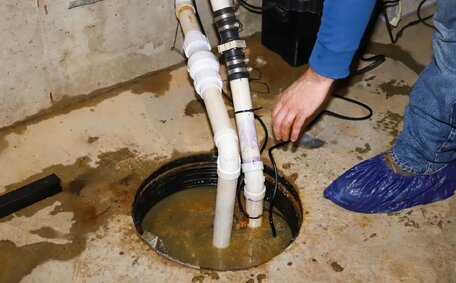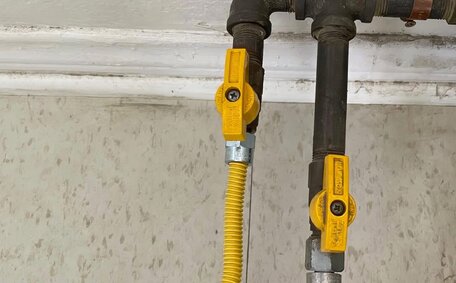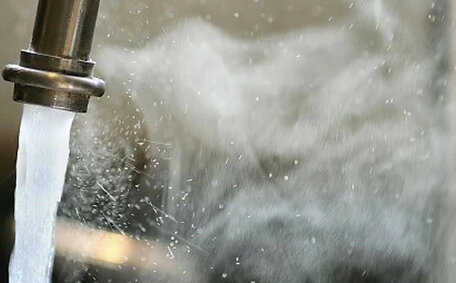What is Pipe Relining and How Does it Work?
Drain pipe relining is a trenchless repair method that fixes drains without requiring excavation. This method inserts a new pipe inside the existing damaged section, effectively renovating it from the inside out. This technique creates new pipe from within, moulding a hardened layer inside the eroded one, thus renewing the old clay concrete passageway.
The pipe relining process begins by using existing access points in the plumbing system to insert a flexible lining tube into the damaged pipe. Technicians use air pressure to ensure the lining conforms tightly to the pipe’s inner walls. For comprehensive insights into pipe relining, explore our detailed guide. As it cures, the lining material forms a robust barrier, sealing cracks and holes.
Once repaired through relining, the drain is structurally reinforced, potentially exceeding the lifespan of the previous installation. Pipe relining can be performed without extensive groundwork and is applicable to various materials, including cast iron, steel, clay, concrete, and PVC, demonstrating its versatility. The process can be completed with minimal disruption and is suitable for PVC fibreglass pipes, often within a single day.
Compared to traditional repair solutions that require replacing old pipes, commercial pipe relining stands out, boasting advantages like quicker completion, neatness, and greater cost-effectiveness. There’s no requirement to excavate adjacent infrastructure, like roads or driveways, to access drains.
Key Benefits of Pipe Relining
Pipe relining offers several benefits for maintaining pipes in non-residential buildings:
- No building closures or disruption to activities - Relining occurs on-site with virtually no disruption, making it ideal for any business environment.
- Cost savings - Relining offers a cost advantage especially for systems vertical drain, typically costing 60% less than full replacements.
- Prevents future damage - The solid barrier formed by the lining seals breaches effectively, warding off tree root intrusion and erosion.
- Increased flow rates - The smooth new lining reduces sediment buildup, improving drain performance and providing a cost-efficient repair solution for broken pipes.
- Long lifespan - Relined pipes last approximately 50 years, compared to around 25 years for traditional pipe replacements.
With a pipe relining process that repairs pipes your property without excavations through existing plumbing access points, it avoids infrastructure damage or closures to roads and driveways. The lack of mess makes it an ideal choice for the plumbing maintenance needs of your business.
Ultimately, Pipe relining delivers a swift, undisturbing, and cost-effective repair solution your commercial establishment’s plumbing system needs.
Cost and Time Savings
It’s important to consider the significant advantages of pipe relining over full replacement, especially in terms of cost and time savings.
As relining does not command extensive excavation or repair of adjoining infrastructure, it can be carried with less labour and fewer materials than a complete pipe exchange. Moreover, there are no extra costs for reinstatement due to potential damage to roads driveways, or your property’s landscaping since you don’t need extensive digging.
Questions like 'How long does full pipe replacement take?' gain clarity as such work often spans several days due to digging and reconstructing infrastructure. Pipe relining, on the other hand can usually be completed within a day, nullifying any delays from waiting for concrete or soil to settle and preventing digging into your landscape.
Pipe relining can save considerable time and money, costing approximately 60% less than traditional replacements, based on industry estimates. As such, there are significant cost reductions, eliminating the need dig, particularly for expansive commercial property estates.
As pipe relining goes forward without excavating, it significantly cuts down on labour costs and averts infrastructure repairs, providing great value. This efficient process minimises interruption and can take significantly less time compared to pipe replacements.
Minimal Disruption to Business Operations
One of the key benefits of pipe relining is the minimal disruption it causes to daily business operations compared to full pipe replacements.
Traditional pipe replacement requires extensive excavation and downtime, but our relining methods bypass these invasive measures. Traditional methods might close buildings for days or weeks for concrete relaying, delaying tarmac reinstatement and soil compaction following new water pipe installation.
In contrast, pipe relining can typically be completed within a day, avoiding infrastructure damage and the need for excavation. Our well-versed technicians service vertical drain stacks through current openings, enhancing the drain repair process whilst preserving vent systems. Business activities often continue uninterrupted, even during sanitary maintenance of vent systems, with no digging or costly downtime.
For hotels, retail stores, restaurants, factories with waste systems vertical, pipe relining nullifies the potential loss of revenue and reputational harm from prolonged closures due to damaged drains. With staff and customers facing minimal disruption, it’s an ideal solution to repair pipes efficiently.
Long-Term Durability and Effectiveness
A major advantage of pipe relining lies in its exceptional durability and effectiveness in addressing plumbing problems.
The seamless lining becomes a robust protective layer, a method repair that shields against further deterioration within the pipe. It resists corrosion, erosion and future root intrusion. The smooth surface also reduces buildup, ensuring optimal flow rates for drainage.
While traditional pipe replacements may last around 25 years, relined pipes have a lifespan of 50 years or more. This extended service life stems from the use of durable epoxy or polyurethane pipe relining products, reflecting its superiority over traditional methods.
For business owners facing repeat pipe damage issues, pipe relining is perfect for providing an enduring option to fix your plumbing concerns with new pipe lining. The new internal pipe lining repairs existing pipes for decades rather than years.
Pipe relining stands out for its remarkable durability and longevity as a repair method. It’s a smart, forward-thinking solution for commercial buildings.
Considerations for Non-Residential Pipe Relining
There are multiple factors to consider when evaluating pipe relining for non-residential structures:
- Type and size of sewer pipe - Relining can renovate sewer systems when a custom lining is inserted into sewer pipes of cast iron, steel, clay, concrete, and PVC.
- Extent of damage - Severely corroded or collapsed pipes may be beyond repair.
- Accessibility - Entry points are needed to feed the lining tube through all old pipe sections.
- Usage and flow rates - Choose a lining thickness capable of handling effluent volumes from the building.
An onsite evaluation to assess damage and the condition of the cast iron pipe systems is crucial in deciding the suitability of relining. Technicians can advise on best practises for your building’s piping infrastructure and assess the extent damage and usage levels.
Relining avoids the need excavation that would otherwise disrupt business operations.
Our experts customise trenchless pipe relining for commercial settings according to distinct types pipes, sizes and the extent of impairment.
Extent and Type of Pipe Damage
To make sure relining suits the needs of the pipes in your property, comprehensively assessing the extent and nature of pipe damage is essential. Minimal corrosion or cracks can often be repaired, however severely damaged, collapsed or blocked pipes may be beyond relining.
Our experts thoroughly inspect pipe accessibility and damage before recommending solutions. Relining excels at restoring pipes with small holes, cracks, and root intrusions, suitable for various materials including cast iron and PVC. However, in instances where pipes have collapsed taking up large areas or pipes are completely blocked, replacement might be necessary.
Our specialists conduct CCTV drain inspections to assess pipe damage. This aids in determining the precise locations and severity of issues for the best repair method, in line with NuFlow technologies. It also allows assessing accessibility through entry points.
In cases where relining is not possible due to extensive damage, we can advise on installing a new one through targeted pipe replacement as an alternative. This focuses on damaged portions rather than entire pipe runs.
Accessibility of Pipes
Determining the viability of relining heavily depends on the accessibility of the damaged pipes. Our technicians need access to fully inspect the piping layout and feed the flexible relining tube throughout the entire damaged section.
Entry points like cleanouts, vents and openings connected to the damaged pipes are required. For expansive commercial sectors, facilities managers should provide clear drainage schematics that highlight available drain stacks vent system access points, negating the need to dig into foundational structures.
If pipes are inaccessible due to being embedded in concrete slabs or located behind walls, relining may not be possible. In these instances, small excavations at entry points or strategically drilling access holes might allow the process.
Ultimately, pipe accessibility impacts the ability to thoroughly inspect damage and feed the lining tube.
Suitability for Different Pipe Types and Sizes
Pipe relining is highly efficient for various pipe types and sizes in non-residential buildings.
Our linings are perfect for pvc hdpe, clay, as well as iron steel materials — suited for restoring waste systems pipes from diverse material types. They’re suitable for both pressure and drainage systems, right in line with your infrastructure needs.
We provide custom-sized diameters for waste system pipes beneath roads and driveways, ranging from 50mm to 300mm for standard drain lines. For specialty process using pipe within an old pipe, compact linings permit restorative relining to as small as 35mm, while jumbo linings are ideal for expansive 500mm pipes.
Larger diameter pipes, such as those used in stack vent systems handling significant effluent volumes, may need multiple lining applications for added strength. Conversely, smaller lines prone to blockages can be upgraded with smooth-bore low-friction linings, providing a more cost-effective maintenance option.
An onsite inspection ensures precise stacks vent and typical pipe dimensions and configurations are recognised. We then engineer an optimal relining strategy catering to your specific pipe infrastructure.
Customized solutions enable pipe relining to reliably restore structural integrity and flow for a range of pipe materials and sizes.
Real-World Case Studies and Applications
Pipe relining has been effectively implemented in many commercial settings, proving its suitability for non-residential buildings.
Expert pipe relining revitalized the Sydney Harbour Bridge’s stormwater drains, eliminating the need for complete replacement. Over 500 metres of century-old pipes were rejuvenated in mere days with uninterrupted operations - pipeslearn more about these pipe-saving endeavours.
We relined wastewater pipes at a major hotel in the Blue Mountains, guaranteeing an impeccable stay. Previous tree root damage had caused leaks and blockages. Our pipe lining seamlessly repaired the pipes without any loss of service during their peak season.
These real-world case studies showcase our expertise in providing tailored pipe relining solutions that can be completed within one day for businesses. We provide comprehensive repair solutions, handling the process from inspection to lining installation, liaising with managers to minimise disruption.
Boasting over 20 years of expertise, Kellyville Plumbing is poised to ensure long-term efficacy in pipe health across an array of building usages.
Maintaining Relined Pipes for Optimal Performance
To ensure relined pipes continue operating at peak performance, Building maintenance can be done without invasive procedures thanks to pipe relining.
We advocate for biennial CCTV inspections of relined pipes by our specialists. This allows detecting any new cracks or issues early. It is also advised that annual high pressure cleaning be commissioned, as such a repair can effectively prevent buildup and preserve smooth drainage flow.
Beyond scheduled maintenance, also monitor relined pipes following extreme weather events or nearby construction works. Vibrations or shifting soil can potentially damage lining seals.
For active maintenance, owners can consider adding food-grade drain maintenance solutions down sinks and drains monthly. These break up organic matter and prevent blockages in your home’s plumbing. Prune nearby trees as needed to prevent invasive roots from re-damaging pipes that could affect your hot water systems.
With occasional inspections for early issue detection paired with preventative maintenance steps, relined pipes will continue delivering optimal performance. Proper care ensures they meet or even exceed the 50 year lifespan.
If issues emerge with your relined pipes, reach out to our team, known for their expertise in pipe repair, who provide an installation guarantee for assistance. We offer long-term workmanship warranties and can reinspect or address any lining failures, ensuring a long-term solution.
Regular Inspections and Monitoring
We recommend building owners implement regular inspections and monitoring of relined pipes to optimise longevity.
CCTV drain inspections every 2 years allow early detection of new cracks or issues. We can then repair linings before major failures occur. Annual high pressure pipe cleaning is also advised to reduce buildup and maintain flow.
Nearby construction works can also be monitored for vibrations damaging freshly relined pipes.
Through regular inspections and preventative drain cleaning, relined pipes will maintain optimal performance over the long term.
Preventative Maintenance
Implementing preventative maintenance is crucial for getting the maximum lifespan out of relined pipes.
We recommend scheduling high pressure cleaning every year to clear any buildup and maintain smooth drainage flow. Monthly use of drain maintenance additives helps dissolve debris before blockages form, maintaining the integrity of potable water lines.
Prompt pruning of intrusive tree roots and repairing minor lining fractures can prevent severe issues more effectively than reactive measures. Monitoring for leaks after extreme weather events is also wise.
Proactive cleaning, inspections, and repairs can address common issues before they lead to pipe failures, ensuring greater resilience against future challenges. This proactive approach helps maintain the optimum performance of relined systems throughout their projected 50-year lifespan.






